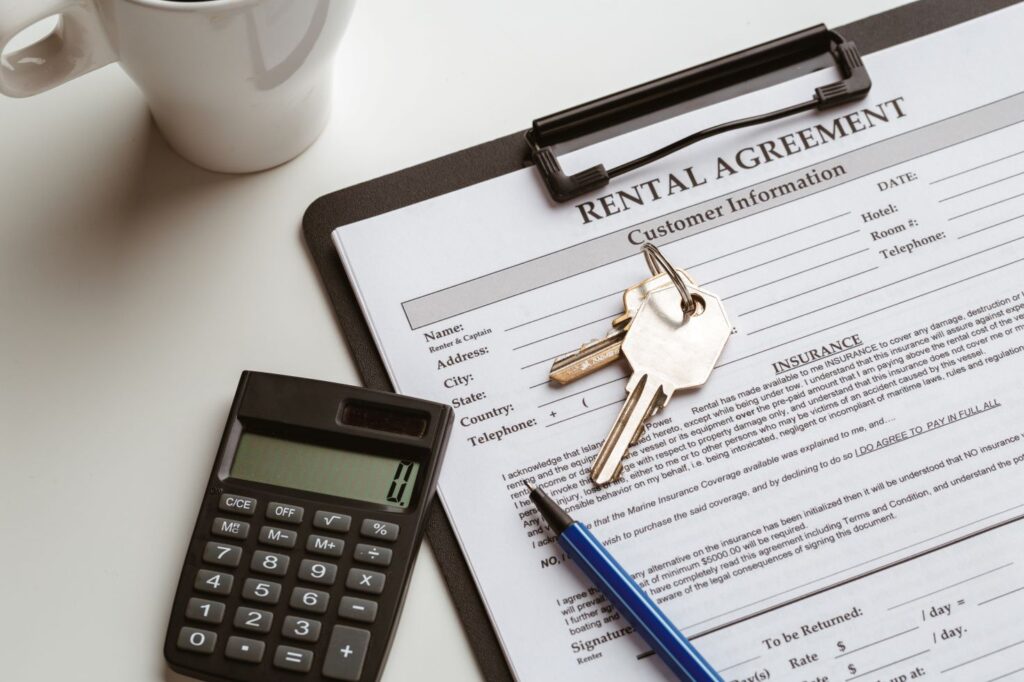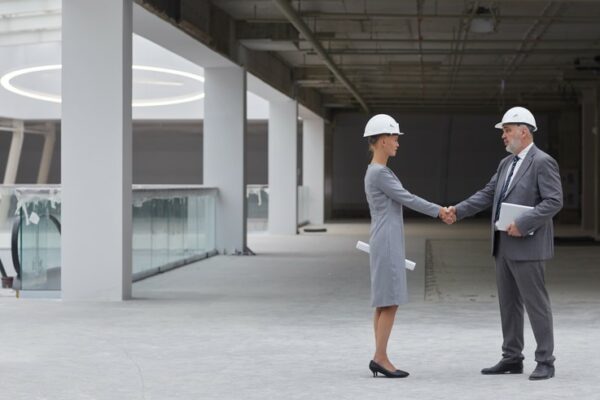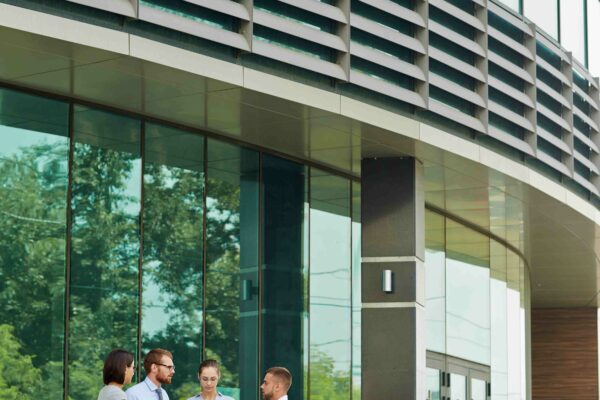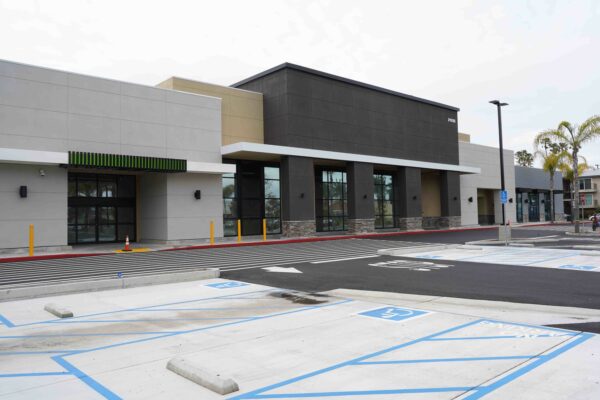
When it comes to leasing commercial space, understanding property rates is essential for making informed decisions. One key factor that plays a significant role in determining rent costs is the rental rate “by the foot.” This term refers to how commercial spaces are priced based on the square footage of the property, with rates varying depending on factors like location, building quality, and demand. Grasping how rental prices are calculated and what influences them can help businesses navigate their options and negotiate favorable lease terms.
I’m Matt Morgan. With extensive experience at IPA Commercial Real Estate, I’ve specialized in understanding commercial property rental rates per square foot, especially for retail and office properties. Let’s dive deeper into the factors impacting these rates.
When it comes to commercial property rental rates per square foot, it’s essential to understand how much you’re paying for each square foot of space on an annual basis. This rate serves as the foundation for calculating the total cost of leasing a commercial property, and it can vary significantly depending on location, type of space, and market demand. Whether you’re leasing office space, retail storefronts, or industrial properties, the rate per square foot directly impacts your budget and overall expenses. Having a clear grasp of this pricing structure allows you to assess the value of different spaces, negotiate lease terms effectively, and make well-informed decisions for your business.

Lease Rate Basics
The lease rate is the amount paid over a specified time period for using a property. In commercial real estate, this is usually expressed as a dollar amount per square foot per year. For example, if a space costs $30 per square foot annually and you’re leasing 3,000 square feet, your total annual rent would be $90,000.
Here’s the simple formula:
- Price Per Square Foot x Total Square Footage = Total Annual Rent
This formula helps both landlords and tenants set and negotiate rental agreements with clarity.
The price per square foot is crucial because it allows for easy comparison between different properties, regardless of their size. This metric is a standard way to assess rental costs and is especially useful when deciding between multiple locations.
Annual Basis Calculation
Most commercial leases are calculated on an annual basis. This means the lease rate is quoted for a year, even if payments are made monthly. For example, in California, it’s common to see monthly quotes, but they’re derived from the annual rate.
Understanding rental rates on an annual basis helps businesses plan their finances better. It provides a clear picture of the yearly cost, enabling more accurate budgeting and forecasting.
Real-World Example
Consider a retail space in a busy area. The lease rate might be quoted at $40 per square foot per year. If the space is 2,500 square feet, the annual rent would be:
- $40/sq. ft. x 2,500 sq. ft. = $100,000 per year
This breaks down to about $8,333 per month.
Factors Influencing Commercial Property Rates
When setting commercial property rental rates per square foot, several key factors come into play. Understanding these can help landlords and tenants make informed decisions.
Location Analysis
Location is king in real estate. A property’s location significantly impacts its rental rate. Properties in busy areas or near major hubs often command higher prices due to increased demand. For example, office spaces in downtown areas typically have higher rates compared to suburban locations.
A detailed location analysis involves assessing demographics, population growth, and economic trends. Understanding these factors helps in setting competitive rates that reflect the property’s true market value.
Property Size and Configuration
The size and layout of a property can also affect rental rates. Larger spaces might offer economies of scale, potentially leading to lower rates per square foot. However, unique configurations or features, like open floors or high ceilings, might add value and justify higher rates.
Usable vs. Rentable Square Footage is another consideration. Rentable square footage includes shared common areas, which can increase the overall rate. Understanding the distinction helps tenants know exactly what they’re paying for.
Operating Expenses
Operating expenses are the costs associated with maintaining a property. These include utilities, maintenance, and taxes. Properties with higher operating expenses might have higher rental rates to cover these costs.
For instance, a building with a state-of-the-art HVAC system might have higher operating costs but offers better comfort, justifying a higher rental rate.
Tenant Demands
Lastly, tenant demands can influence rental rates. Tenants may require specific amenities or configurations that can increase costs. For example, a tech company might need advanced IT infrastructure, while a retail tenant might value high foot traffic and parking space.
Meeting tenant demands can make a property more attractive, potentially allowing for higher rates. It’s a balancing act between offering desirable features and maintaining competitive pricing.
Understanding these factors provides clarity on why commercial property rental rates per square foot vary. This knowledge equips stakeholders to steer the commercial real estate market effectively.
Types of Commercial Leases
When it comes to leasing commercial property, the type of lease you choose can have a big impact on your costs and responsibilities. Let’s break down the three main types: triple net lease, modified gross, and full service gross.
Triple Net Lease (NNN)
A triple net lease is common in retail properties. Here, the tenant pays not just the base rent, but also property taxes, insurance, and maintenance costs.
This lease type shifts many expenses from the landlord to the tenant, leading to lower base rental rates. However, tenants must budget for these additional expenses. This can provide a more stable cash flow for landlords, as they are less affected by fluctuating operational costs.
Modified Gross Lease
A modified gross lease is a middle ground between triple net and full service gross leases. In this setup, the tenant pays a base rent plus some, but not all, of the property expenses. Typically, utilities and janitorial services might be added to the rent.
This lease type offers flexibility. For example, if you’re renting a 1,000 sq. ft. space at $10 per square foot per year, your rent would be $10,000 annually, plus specific agreed-upon expenses. This option can be appealing to tenants who want predictable costs without taking on all operational expenses.
Full Service Gross Lease
With a full service gross lease, the tenant pays one all-inclusive rent amount. The landlord covers all operating expenses, such as taxes, insurance, and utilities.
This type of lease is often used in office spaces. It provides simplicity for tenants, as they know exactly what their monthly costs will be. However, because the landlord assumes more risk, the base rent is typically higher to cover these expenses.
How to Calculate Commercial Rent
Calculating commercial rent involves understanding a few key concepts: usable square footage, rentable square footage, and the common area factor. Let’s break these down.
Usable Square Footage (USF) refers to the space that a tenant can actually occupy and use. This includes offices, meeting rooms, and any other space exclusive to the tenant.
Rentable Square Footage (RSF) includes the usable space plus a portion of the common areas. Common areas might consist of lobbies, restrooms, and hallways that all tenants share.
To calculate RSF, a factor called the common area factor is applied. This factor accounts for the shared spaces and is added to the USF to determine the RSF.
Example Calculation:
Imagine you’re leasing a 3,000 square foot office with a 16.7% common area factor. Here’s how you’d calculate the RSF:
- Common Area Space: 3,000 USF x 16.7% = 501 square feet
- Total RSF: 3,000 USF + 501 square feet = 3,501 RSF
Calculating Rent
Once you have the RSF, you can calculate the annual rent by multiplying it with the price per square foot.
Example:
If the rental rate is $32.00 per square foot, the calculation would be:
- Annual Rent: 3,501 RSF x $32.00/sq. ft. = $112,032 per year
- Monthly Rent: $112,032 / 12 = $9,336 per month
This method ensures you’re accounting for all the space you use, including shared areas.
Trends Impacting Commercial Property Rates
When it comes to commercial property rental rates per square foot, several key trends influence pricing. Let’s explore some of the most significant factors: interest rates, market conditions, and the demand-supply ratio.
Interest Rates
Interest rates play a vital role in shaping real estate markets. In March 2022, interest rates began to rise, leading to a notable impact on commercial property prices. Higher interest rates often mean higher borrowing costs, which can pressure property owners to adjust their pricing strategies. This can lead to a price correction, as seen with a 22% decrease in sale prices between 2022 and 2024.
Market Conditions
Market conditions, including macroeconomic policies and employment trends, significantly affect commercial real estate. For instance, the global vacancy rate for office space hit a record high of 15.9% in the third quarter of 2023. This increase in vacancies can lead to more competitive pricing and potentially lower rental rates. According to CBRE, asking rents might fall by 3% to 4% in 2024, with landlords offering more concessions to attract tenants.
Demand-Supply Ratio
The demand-supply ratio is another crucial factor. The ongoing changes in office space usage and the rise of remote work have led to reduced demand for traditional office buildings. On the flip side, industrial properties continue to thrive due to the e-commerce boom, with rental growth rates averaging 5.5%. This shift in demand impacts pricing, with best-in-class properties in desirable locations maintaining higher rates, as reported by Statista.
Understanding these trends helps landlords and tenants steer the changing landscape of commercial real estate. Next, we’ll address some frequently asked questions about commercial property rental rates.
Frequently Asked Questions about Commercial Property Rental Rates
Calculating the price per square foot for a commercial lease involves a straightforward formula. You multiply the annual rental rate by the total square footage of the space. For instance, if the annual rate is $40 per square foot and the space is 5,000 square feet, the total annual rent would be $200,000. To find the monthly rent, divide this amount by 12, resulting in approximately $16,667 per month.
It’s essential to understand whether the quoted rate is based on usable or rentable square footage. Usable square footage refers to the space you actually occupy, while rentable square footage includes a share of common areas like lobbies or restrooms.
What are the average commercial property rates in major US cities?
Commercial property rental rates vary significantly across major US cities. Here’s a snapshot of average office rental rates per square foot in 2024:
- New York: Offices in Manhattan average $71 per square foot. Retail spaces city-wide average $57 per square foot.
- Los Angeles: Office space averages $41 per square foot, while retail spaces are around $36 per square foot.
- San Francisco: Office space commands about $60 per square foot, with retail spaces averaging $38 per square foot.
These rates can differ based on the location within the city and the class of the property. Prime locations and high-class properties generally command higher rates.
How do lease structures affect rental rates?
Lease structures play a critical role in determining rental rates. Here are the most common types:
- Triple Net Lease (NNN): Tenants pay the base rent plus property taxes, insurance, and maintenance costs. This can result in a lower base rent but higher overall costs.
- Full Service Gross Lease: The rent covers all operating expenses, including utilities and maintenance. This type typically has a higher base rate but fewer additional costs for tenants.
- Modified Gross Lease: A middle ground between NNN and full service, where the tenant and landlord share some operating expenses. This structure offers more flexibility and can affect the overall cost depending on the specific terms agreed upon.
Why Choose IPA Commercial Real Estate?
Navigating commercial property rental rates per square foot can be complex, but IPA Commercial Real Estate is here to make it easier for you. Our team, based in Southern California, brings over 30 years of experience in the industry, offering unparalleled expertise and personalized service to meet your unique needs.
At IPA Commercial Real Estate, we believe in providing more than just a transactional service. We offer a full suite of consulting services to help you understand and optimize your property investments. Our team is committed to guiding you through every step of the leasing process, from determining the best lease structure to calculating the most competitive rental rates.
Our deep understanding of the Inland Empire and Southern California markets allows us to provide valuable insights and strategic advice. We work closely with our clients to ensure their properties are positioned for success, offering solutions that add value and improve profitability.
Whether you’re a seasoned investor or new to commercial real estate, our personalized approach ensures that you receive the attention and support you deserve. Our clients have direct access to professionals who respond personally and promptly, ensuring a seamless and stress-free experience.
To learn more about how IPA Commercial Real Estate can assist you with your property management needs, visit our Property Management Services page. Let us show you how our knowledge, experience, and value-driven approach can make a difference in your real estate journey.

















